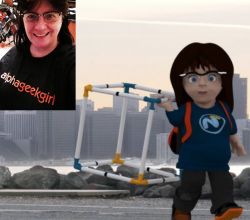Getting rid of weirdness
When you first start out using MODO you are bound to come across some aberrations in your models which you know are wrong, but you have no idea what you did to mess it up, and you certainly have no clue how to fix it. While I certainly cannot predict every problem you'll encounter, as a noob, here are a few that have stumped me.
Intersecting Polys

Initially, when I first encountered this I thought it was a texture problem. Whenever I ran my mouse over it, it would flicker and splutter. It drove me nuts for an hour before I figured out that it was in fact actually two polygons intersecting, or rather overlapping each other along the same plane. Once you know, you can usually figure this out visually, and either move the offending polygon away a bit, or delete it altogether if it's not required.
FBX Normals

In the second example, I had imported an .fbx file that had previously been exported from Autodesk's CAD application, Revit. I knew that whatever the problem was, it was something that went wrong in the export process. So after checking for overlapping polygons, n-gons and any other aberration I'd come across before, I went straight to an expert and asked my mate, Paulo Madeira (Madeira3D) if he could shed any light.
Immediately, he responded and explained that I would need to select all the offending mesh items, go to Lists > Other Maps, select FBX_Normals, right-click and delete them.

Even though this should have worked, at first it didn't for me. I would select Delete and nothing would happen. So instead, I went to the Vertex Map menu at the top and selected Delete from there, and it worked. Of course (as it always does ;)), the next time I opened MODO and tried right-clicking and deleting the FBX Normal maps, it worked O.o

Vertices that fly into outta space

And lastly, this will occur occasionally without you noticing. You'll be working up-close on something and then when you zoom out, you'll see your mesh is messed up because a vertex decided that it didn't want to play with the others. Don't do what I did the first time - and that is, select the 'cone of polygons' and delete them - otherwise, you'll find you've created a big hole in your mesh. Instead, select the single vertex and backspace or delete it, and it should fix itself.









 25%
25%











